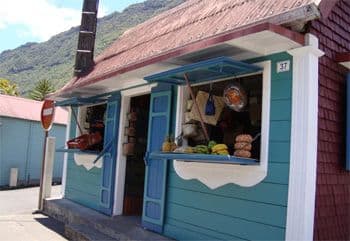Holidays and Tourism in Reunion Island
µµµ
µµµ
µµµ
µµµ
Restaurants in the Cirque of Salazie
Aeras in the Island
Town
Types of restaurants

As the green lung of the island, the cirque of Salazie on the east coast, the windward coast, enjoys the spray which comes directly from the Indian Ocean and is detained by the high relief of the mountains. This rainfall that breaks all world records makes it the greenest area of the island and provides fertile and lush landscapes, overflowing with waterfalls, flowers and forests.
This is an ideal climate for bamboo, trout farming, but also for growing watercress, taro roots, bananas and chayotes.
Chez Billy Ô Tipikemen Kréol
Hell Bourg
When you arrive in Hell Bourg, just before entering one of the most beautiful villages in France, do not miss the restaurant CHEZ BILLY Ô TIPIKEMEN KREOL! The location, the view, the hearty welcome, but above all the cuisine with its local ingredients and the chef's inventiveness will delight the taste buds of walkers and visitors eager for authentic taste.
Hell Bourg
When you arrive in Hell Bourg, just before entering one of the most beautiful villages in France, do not miss the restaurant CHEZ BILLY Ô TIPIKEMEN KREOL! The location, the view, the hearty welcome, but above all the cuisine with its local ingredients and the chef's inventiveness will delight the taste buds of walkers and visitors eager for authentic taste.

The chouchou

You can enjoy them in the gites, restaurants and tables d'hotes of Salazie (and more generally throughout the island). In Reunion, the chouchou is consumed mainly in gratins, caris, but also delicious chouchou cakes. They also stir-fry the brèdes, the stems, with garlic and spices. In Salazie particularly, the stems are also used, once dried, to make straw hats, known in Europe under the name "Italian Straw Hat".





